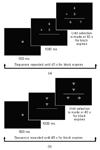An fMRI study of magnitude comparison and exact addition in children
- PMID: 20116955
- PMCID: PMC3230786
- DOI: 10.1016/j.mri.2009.11.010
An fMRI study of magnitude comparison and exact addition in children
Abstract
By contrast to the adult literature, in which a consistent parietofrontal network for number processing has been identified, the data from studies of number processing in children have been less consistent, probably due to differences in study design and control conditions. Number processing was examined using functional magnetic resonance imaging in 18 right-handed children (8-12 years) from the Cape Coloured community in Cape Town, South Africa, using Proximity Judgment and Exact Addition (EA) tasks. The findings were consistent with the hypothesis that, as in adults, the anterior horizontal intraparietal sulcus (HIPS) plays a major role in the representation and manipulation of quantity in children. The posterior medial frontal cortex, believed to be involved in performance monitoring in more complex arithmetic manipulations in adults, was extensively activated even for relatively simple symbolic number processing in the children. Other areas activated to a greater degree in the children included the left precentral sulcus, which may mediate number knowledge and, for EA, the head of the caudate nucleus, which is part of a fronto-subcortical circuit involved in the behavioral execution of sequences. Two regions that have been linked to number processing in adults - the angular gyrus and posterior superior parietal lobule - were not activated in the children. The data are consistent with the inference that although the functional specialization of the anterior HIPS may increase as symbolic number processing becomes increasingly automatic, this region and other elements of the parietofrontal network identified in adults are already reliably and robustly activated by middle childhood.
Copyright 2010 Elsevier Inc. All rights reserved.
Figures



Similar articles
-
Parietal dysfunction during number processing in children with fetal alcohol spectrum disorders.Neuroimage Clin. 2015 Apr 1;8:594-605. doi: 10.1016/j.nicl.2015.03.023. eCollection 2015. Neuroimage Clin. 2015. PMID: 26199871 Free PMC article.
-
Learning complex arithmetic--an fMRI study.Brain Res Cogn Brain Res. 2003 Dec;18(1):76-88. doi: 10.1016/j.cogbrainres.2003.09.005. Brain Res Cogn Brain Res. 2003. PMID: 14659499
-
Development of neural networks for exact and approximate calculation: a FMRI study.Dev Neuropsychol. 2008;33(4):447-73. doi: 10.1080/87565640802101474. Dev Neuropsychol. 2008. PMID: 18568899
-
[Neural bases of numerical processing and calculation].Rev Neurol. 2010 Jan 1-15;50(1):39-46. Rev Neurol. 2010. PMID: 20073022 Review. Spanish.
-
Neural underpinnings of numerical and spatial cognition: An fMRI meta-analysis of brain regions associated with symbolic number, arithmetic, and mental rotation.Neurosci Biobehav Rev. 2019 Aug;103:316-336. doi: 10.1016/j.neubiorev.2019.05.007. Epub 2019 May 10. Neurosci Biobehav Rev. 2019. PMID: 31082407 Review.
Cited by
-
Impaired delay and trace eyeblink conditioning in school-age children with fetal alcohol syndrome.Alcohol Clin Exp Res. 2011 Feb;35(2):250-64. doi: 10.1111/j.1530-0277.2010.01341.x. Epub 2010 Nov 12. Alcohol Clin Exp Res. 2011. PMID: 21073484 Free PMC article.
-
Number processing in adolescents with prenatal alcohol exposure and ADHD: differences in the neurobehavioral phenotype.Alcohol Clin Exp Res. 2011 Mar;35(3):431-42. doi: 10.1111/j.1530-0277.2010.01360.x. Epub 2010 Dec 16. Alcohol Clin Exp Res. 2011. PMID: 21158874 Free PMC article.
-
Math skills and microstructure of the middle longitudinal fasciculus: A developmental investigation.PLoS One. 2025 Jun 11;20(6):e0324802. doi: 10.1371/journal.pone.0324802. eCollection 2025. PLoS One. 2025. PMID: 40498707 Free PMC article.
-
Where arithmetic and phonology meet: The meta-analytic convergence of arithmetic and phonological processing in the brain.Dev Cogn Neurosci. 2018 Apr;30:251-264. doi: 10.1016/j.dcn.2017.05.003. Epub 2017 May 10. Dev Cogn Neurosci. 2018. PMID: 28533112 Free PMC article.
-
Functional magnetic resonance imaging study comparing rhythmic finger tapping in children and adults.Pediatr Neurol. 2012 Feb;46(2):94-100. doi: 10.1016/j.pediatrneurol.2011.11.019. Pediatr Neurol. 2012. PMID: 22264703 Free PMC article.
References
-
- Annett M. A classification of hand preference by association analysis. British Journal of Psychology. 1970;61:303–321. - PubMed
-
- Ansari D. Does the parietal cortex distinguish between “10, ” “ten, ” and ten dots? Neuron. 2007;53:165–167. - PubMed
-
- Ansari D, Dhital B. Age-related changes in the activation of the intraparietal sulcus during nonsymbolic magnitude processing: an event-related functional magnetic resonance imaging study. Journal of Cognitive Neuroscience. 2006;18:1820–1828. - PubMed
-
- Ansari D, Garcia N, Lucas E, Hamon K, Dhital B. Neural correlates of symbolic number processing in children and adults. Neuroreport. 2005;16:1769–1773. - PubMed
-
- Benke T, Delazer M, Bartha L, Auer A. Basal ganglia lesions and the theory of fronto-subcortical loops: Neuropsychological findings in two patients with left caudate lesions. Neurocase. 2003;9:70–85. - PubMed
Publication types
MeSH terms
Grants and funding
LinkOut - more resources
Full Text Sources
Medical

